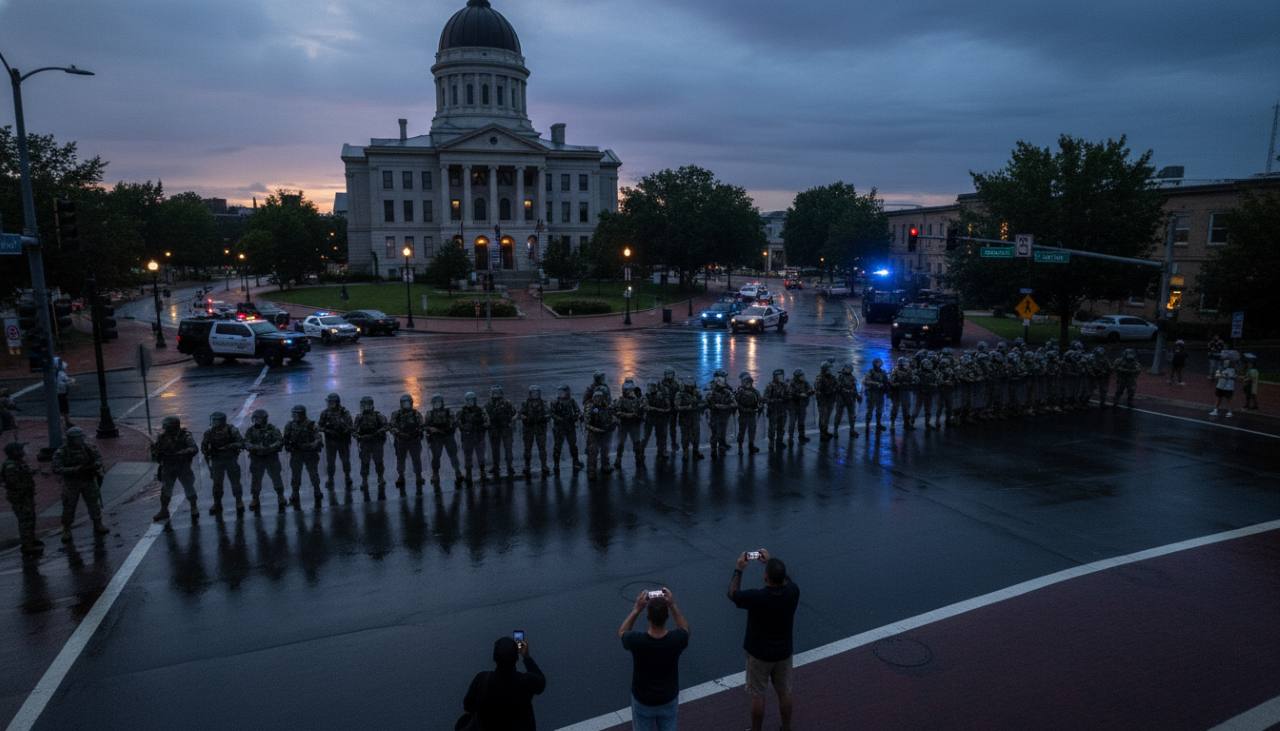
Trump’s Pentagon is ordering every state to stand up National Guard “quick reaction forces” trained for crowd control, shields, batons, Tasers, pepper spray, and ready to deploy fast to American cities.
Trump is also saying the quiet part out loud: if courts or governors resist the Guard, he’s “prepared to send more than the National Guard,” a clear nod to invoking the Insurrection Act. This isn’t routine logistics. It’s the normalization of a domestic security apparatus, run from Washington, with partisan fingerprints all over it.
What’s Actually Happening
The directive tasks all 54 Guard components with building dedicated QRF units and reporting monthly progress to the Pentagon. Most states are assigned around 500 troops, totaling roughly 23,500 nationwide, with the goal of operational readiness by early 2026. Administration spokespeople pitch this as lawful support to local police in “unruly” cities. Critics, including veterans, civil‑military scholars, and civil liberties groups, call it what it looks like: a standing, centrally managed crowd control force that can be used over the objections of governors and mayors.
Defense insiders add an important caveat: the Guard has had reaction forces for years such as NGRF and HRF. The change isn’t invention, it’s intent. Standardized crowd‑control units, scaled nationally, tasked from the top, and positioned for law‑enforcement‑adjacent missions. That’s not disaster relief. That’s domestic order enforcement as a baseline.
How We Got Here
- Executive Power As Lever: An August executive order instructed the department to ensure Guards “are resourced, trained, organized, and available” to quell civil disturbances and to create a standing, nationwide QRF. The current memo is the bureaucratic spine of that political directive.
- Litigation As Speed Bump, Not Brake: Trump has already deployed or sought to deploy Guard units in Washington, Los Angeles, Portland, and Chicago, sparking a thicket of lawsuits and mixed rulings. Appeals are live. Timelines stretch. The federal muscle keeps moving.
- Rhetoric As Roadmap: Trump told military brass America’s “dangerous cities” should be “training grounds” for troops. Even without a formal order, that’s the culture shift: treat blue metros as security problems and live‑fire exercises in governing.
The Legal Rubicon
Two statutes define the battlefield lines:
- Posse Comitatus Act: It bars federal troops from domestic law enforcement. The Guard, when under governors, routinely supports civil authorities. When federalized by the president, the Guard starts to look and act like the very thing Posse Comitatus tries to constrain.
- Insurrection Act: The exception that swallows the rule if a president declares that local authorities “cannot” keep order. Historically rare, from Little Rock in 1957 to Los Angeles in 1992. Politically explosive if used as a workaround for judicial and gubernatorial resistance.
Here’s the uncomfortable truth: you don’t need to constantly invoke the Insurrection Act if you’ve already built a nationwide Guard QRF that reports to you, is trained for riot control, and can be federalized on demand. The architecture is the power.
Why This Is Frightening
- From Surge To Standard Operating Procedure: The Guard’s domestic role is shifting from last‑resort emergency surge to first‑resort crowd‑control posture. Once the gear is bought and the rotations set, the mission will find its moments, protests, immigration sweeps, ballot‑counting “security,” especially in Democratic‑led cities Trump relishes as foils.
- Elections In The Crosshairs: Veterans are sounding alarms about a crisis script we’ve seen elsewhere. Declare emergency, allege fraud, “secure” ballot processing with troops. The point isn’t just what’s ordered, it’s what voters perceive. Chilled turnout is victory by intimidation.
- The Military’s Apolitical Legitimacy: The armed forces are trusted because they are not domestic cops. Put uniformed troops with shields between citizens and courthouses and you invite confrontations, viral mistakes, and a legitimacy crisis that outlasts any presidency.
The Political Theory Of The Case
Trump’s approach reframes civil disorder as a federal problem with a military solution, less governance, more garrison. It’s a hard‑power answer to urban complexity, marketed as safety but operationalized as hierarchy. Washington commands, cities comply. The progressive critique is not that crime doesn’t matter, it’s that liberty and federalism matter too. We fund prevention, reform policing, strengthen local institutions, and protect the ballot, not stand up a nationalized crowd‑control brigade like it’s a new federal police.
What To Watch
- Court Calendars: Appeals over Los Angeles, Portland, and Chicago Guard deployments will define the legal runway. Watch for Supreme Court signals on federalization limits and Insurrection Act thresholds.
- Procurement Breadcrumbs: State compliance memos, unit designations, shipments of crowd‑control equipment, and the specialized military police build‑out in Washington will indicate whether this hardens into a permanent domestic policing arm.
- The Switch Flip: Trump’s “more than the National Guard” line is the tell. The day an Insurrection Act proclamation lands is the day active‑duty troops become domestic law enforcers by fiat. Precedent set. Norm shattered.
Bottom Line
This is a structural pivot, not a one‑off. The bureaucracy is being wired so the executive can police political geography with military force. Democracies don’t usually fall by coup, they erode by normalizing exceptional powers. If “quick reaction” becomes the default reaction to civic dissent, we’ve redefined public safety as submission. The task now is democratic. Reinforce legal guardrails, demand congressional oversight, fund local solutions that reduce harm, and keep the military out of partisan theaters. The republic is not a training ground.
